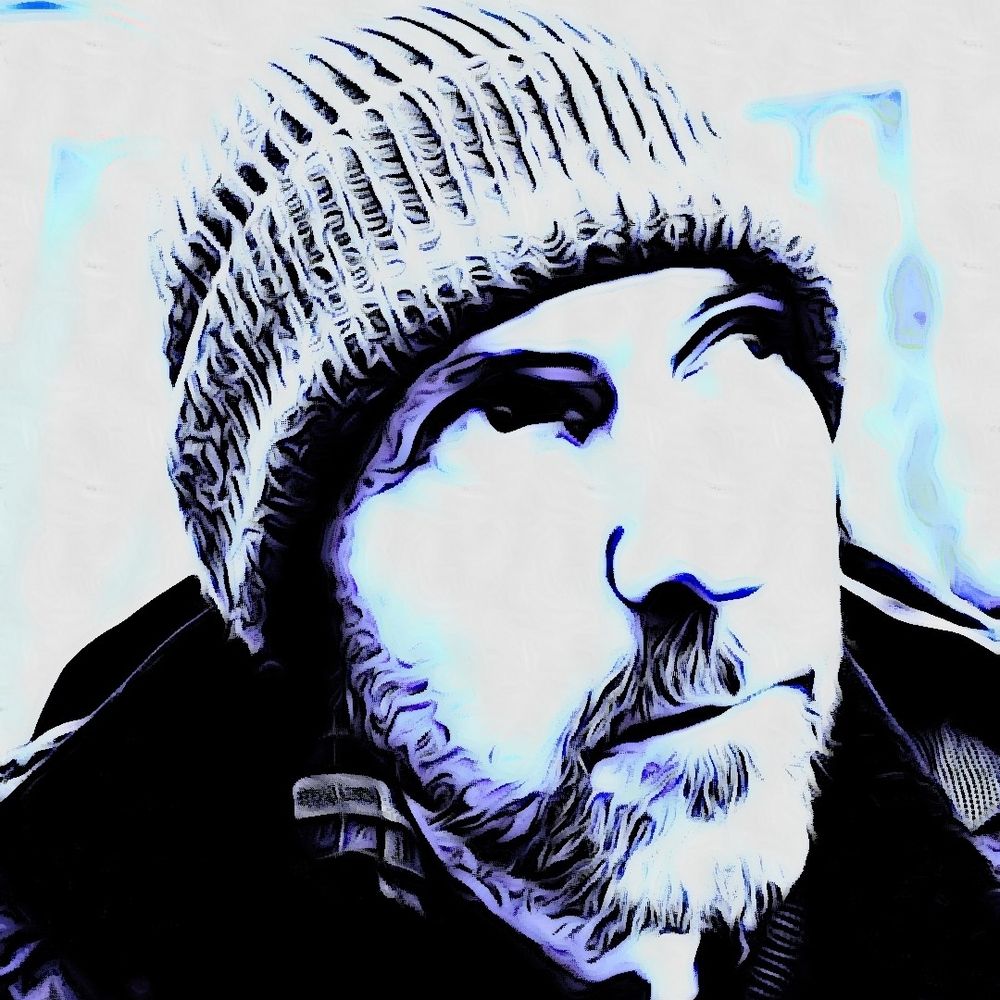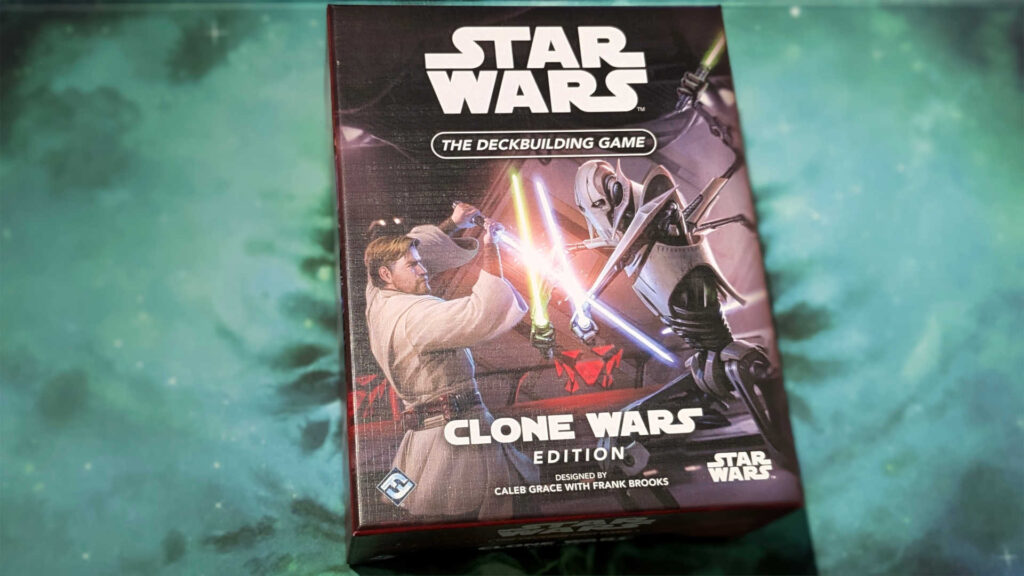The first edition of Star Wars: The Deckbuilding Game was released in 2023, fusing Star Realms-esque deckbuilding mechanics with the less generic, very familiar (and not to mention hugely popular) Star Wars universe. It was a success, both critically and commercially, so it feels like it was just a matter of time before we saw the game expand to cover much more of the vast Star Wars universe, and its wealth of time periods. With the first title covering the original trilogy era, it made sense for the game to shift focus and cover what is arguably the next most popular period in Star Wars history: the Clone Wars. Let’s take a look at the somewhat unwieldily titled Star Wars: The Deckbuilding Game – Clone Wars Edition, and find out what’s new, how it plays, and whether or not it’s worth the trip back to an even longer time ago, in a galaxy far, far away.
Table of Contents
ToggleGetting Started With Star Wars: The Deckbuilding Game – Clone Wars Edition
A complete game in a single box, Star Wars: The Deckbuilding Game – Clone Wars Edition doesn’t require any extra cards or components; unlike Star Wars Unlimited, for example, there’s no collectible aspect to Star Wars: The Deckbuilding Game.
A two-player only game, players will choose to be either the Republic or Separatists. They then take the relevant base deck, displaying their starting base card (Rishi for the Republic and Xorrn for the Separatists) faceup and all other base cards, in any order, facedown underneath it (five fixed cards are used to construct the base deck in the basic game, but all 10 base cards per player are used for an advanced game mode).
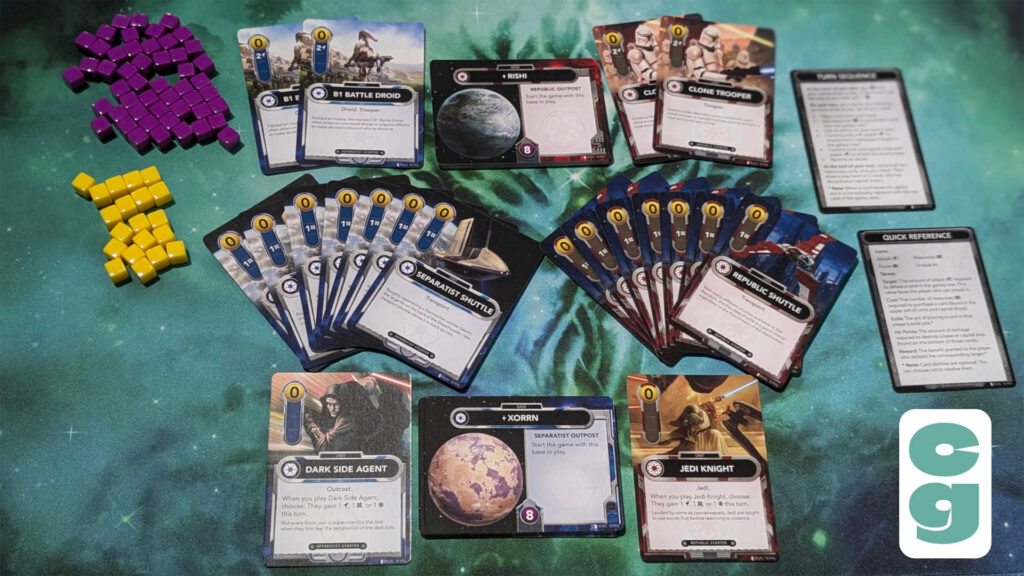
As is the case with other deckbuilding games, players get a starting deck; however, in Star Wars: The Deckbuilding Game, the opposing factions are asymmetrical, so each player will have their own, different starting decks. The Republic get Clone Troopers, a Jedi Knight, and Republic Shuttles to make up their 10-card starter deck; Separatists have B1 Battle Droids, a Dark Side Agent, and Separatist Shuttles to begin the game with. The starting decks and planets are shown in the above image.
Despite the asymmetrical nature of the game, the galaxy deck is used to stock the central market row of cards for both players. However, when creating the six-card market row (by dealing the top six cards from the galaxy deck), Republic cards drawn are oriented towards the Republic player, and likewise for the Separatist cards. Neutral cards are always turned sideways, as they’re available to purchase for both players. A deck of Outer Rim Pilots, which are neutral cards, are placed at the end of the market row, at the opposite end from the galaxy deck; these are always available to purchase for both players.
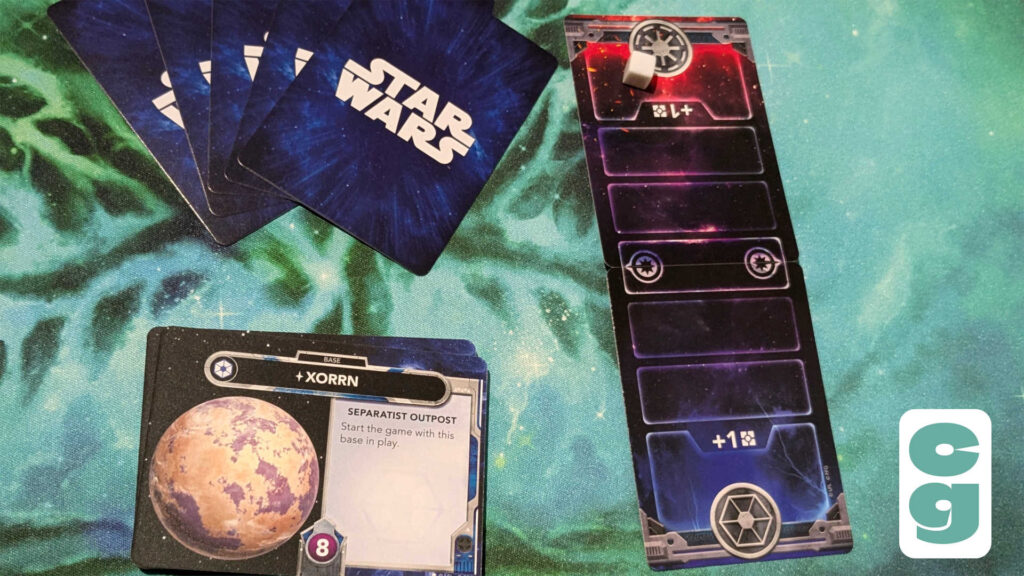
Damage and resource cubes, purple and yellow respectively, are placed within reach of both players, the Balance of the Force track (a folded piece of card that feels a lot flimsier than other components in the box) begins with its own white cube all the way on the Republic side, then players draw five cards from their starting deck and begin the game.
How To Play Star Wars: The Deckbuilding Game – Clone Wars Edition
If you’ve played pretty much any deckbuilding game before, such as Star Realms or even something like Street Fighter, you’ll be right at home even when setting up Star Wars: The Deckbuilding Game. Gameplay-wise, things will be pretty familiar too; each turn, you’ll play all the cards from your hand, using their resources to purchase cards from the market row, with purchased cards going to the player’s discard pile (to be shuffled into a new draw deck when the current one runs out) and their attack values to damage the other player’s base. Card abilities may also be activated on cards in play, though this is optional.
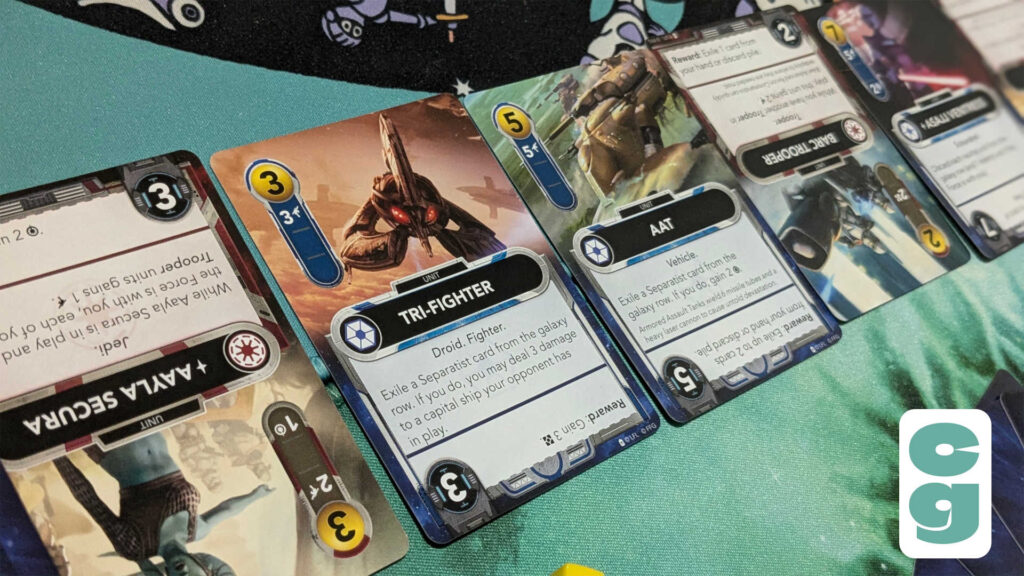
Where things differ is with the asymmetry of the factions; the cards being oriented towards their faction’s player serves another purpose. At the bottom of each card, which will be faced towards the opposing player so they can read it, is text which shows a reward for destroying that card by targeting it with attacks by your cards during your turn.
Another difference to other deckbuilding games is the Balance of the Force track; the Force cube will move towards your side of the track when you play cards which have Force points. If you manage to move the Force cube all the way to your side of the track, “The Force is with you,” and certain card abilities are activated for you as bonuses when played.
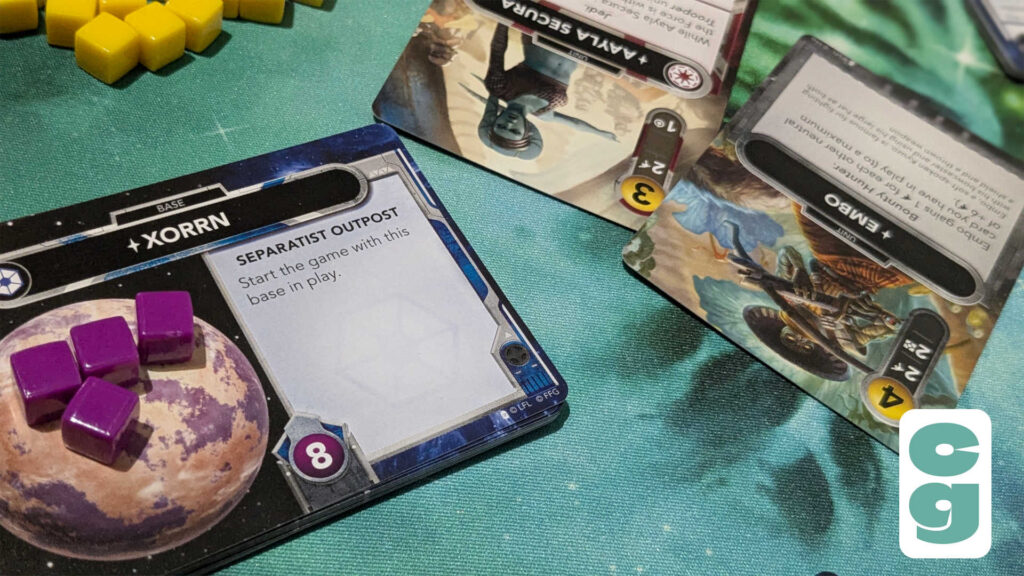
Before we move on to looking at the differences between the two editions of the game, it’s worth checking out the attack example above, as destroying bases will get players closer to victory. Using the example, the Separatist planet Xorrn already has four damage cubes on the card; when the Republic player attacks with Aayla Secura and Embo, both of whom deal two damage each according to the icons on their cards, Xorrn will be destroyed. A new base must be chosen by the Separatist player from their remaining cards, and play continues. The aim of the game is to be the first player to destroy three bases; once a player destroys their opponent’s third base, the game ends.
Does the Clone Wars Edition Differ From the Original Star Wars: The Deckbuilding Game?
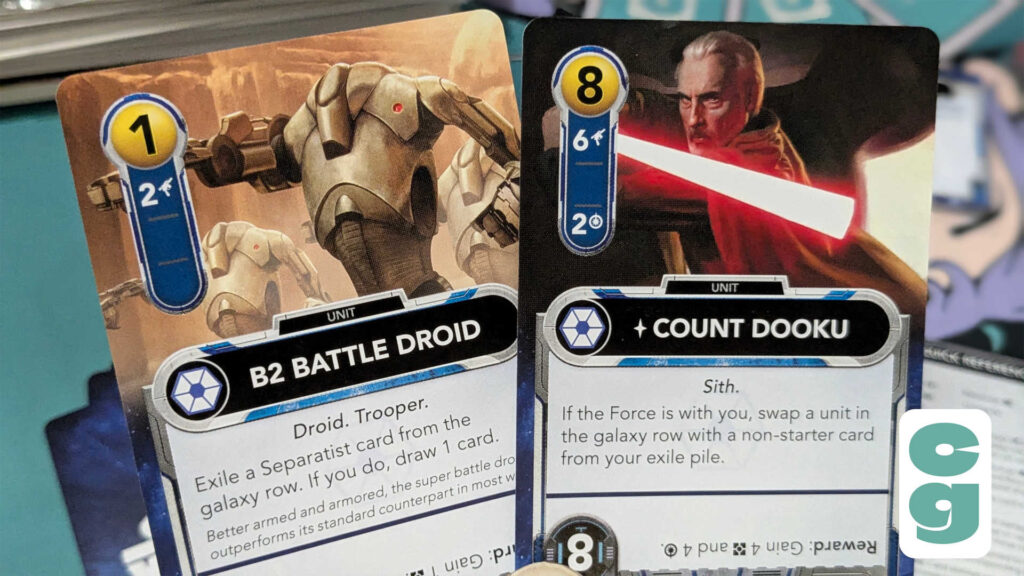
There is a significant difference with the Clone Wars Edition in comparison to the original game; that comes in the form of the exile piles. Instead of removing cards from the game entirely when exiled, players each have their own exile piles; the Separatist player has cards which allow them to send cards to, and recover cards from, their exile pile (as you can see from the two examples above). Though the Republic player is also able to exile cards using certain card abilities, they don’t have any way of returning cards from their exile pile.
In terms of thematic differences, there does seem to be more emphasis on card synergies and teamwork, especially for the Republic player’s cards. This really adds to this edition of the game; there’s a real thematic feel of the larger scale, more organized conflicts of The Clone Wars, as opposed to the scattered battles of the Galactic Rebellion era. In terms of the neutral cards, The Pirate and Bounty Hunter type cards add a lot more flavor and synergy to the neutral deck, which wasn’t quite there in the original edition of the game.
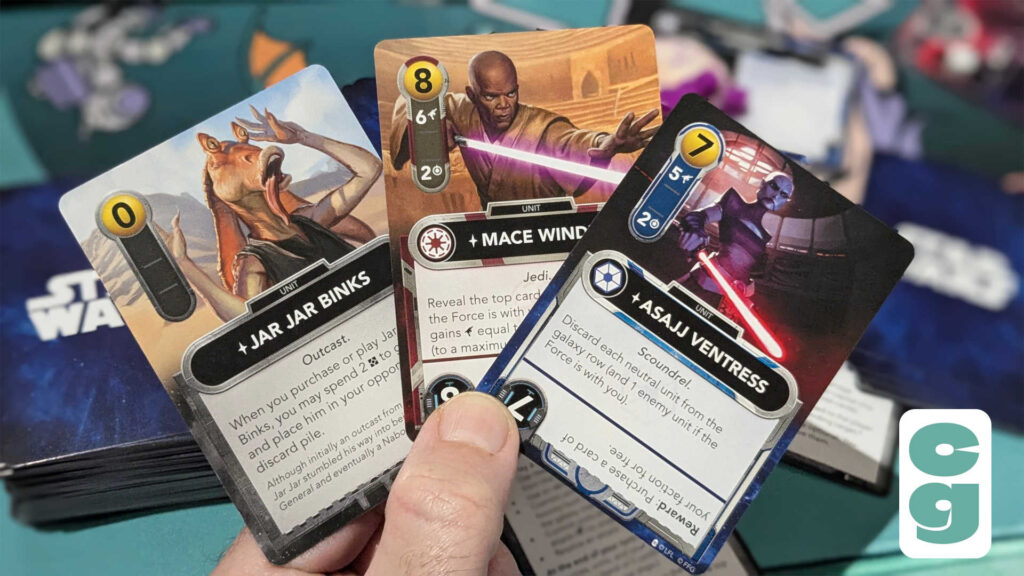
The card art is especially strong in the Clone Wars Edition, and has a much more realistic, more painterly feel than the often comic book-style illustrations found in Fantasy Flight‘s collectible title set in the same universe (and which, coincidentally or not, has just had its first Clone Wars-themed expansion released, in the form of Twilight of the Republic), Star Wars Unlimited.
Can the Two Editions Be Combined or Mixed Together?
The new exile pile mechanics and synergies of the new factions make them a bit more interesting to use than the original decks, but if you want to mix the editions, it’s possible; in my opinion, however, each faction, in each edition, seems perfectly tuned against the other.
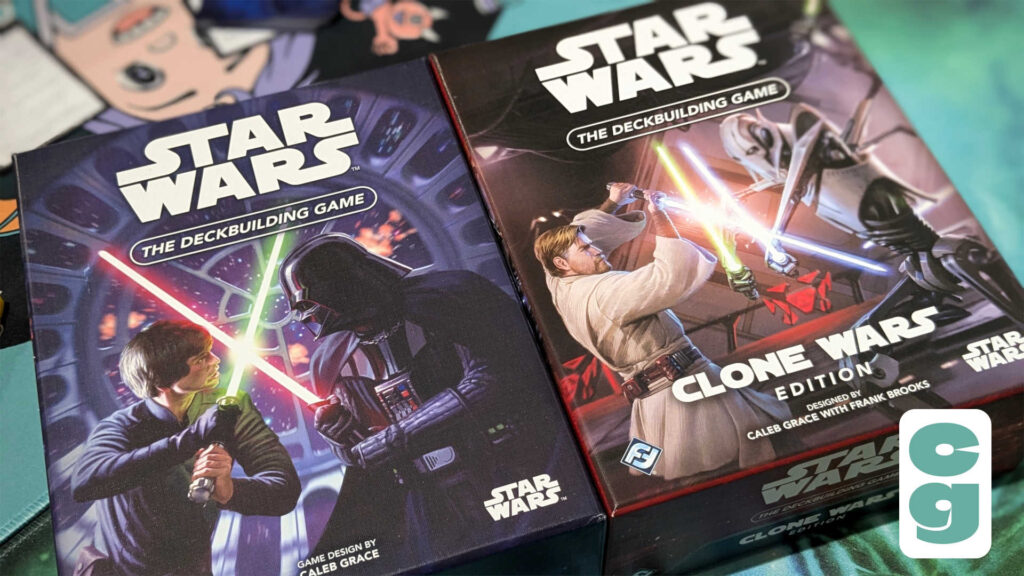
It’s cool to have the option though, and if it’s something you do want to try, what you’ll need to do is sort the cards from the original game into three decks: Empire, Rebellion, and neutral. Do the same with the new edition (except it’s Republic, Separatists, and neutral), then choose one of the factions (as well as their bases), plus one neutral deck.
It’s also possible to play with four players, as a 2v2 multiplayer game; however, this is more complex and has its own extra rules that you can find at the official Star Wars: The Deckbuilding Game website.
Is the Clone Wars Edition Better Than the Original Star Wars: The Deckbuilding Game?
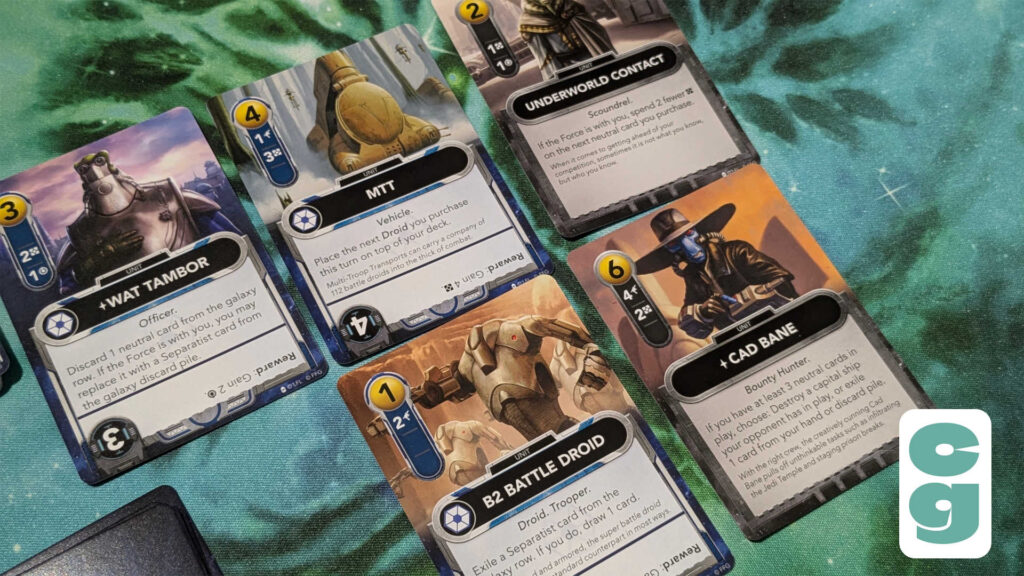
The exile pile mechanic, despite initially seeming like a relatively minor addition in general, helps to really distinguish the factions in the Clone Wars Edition, and greatly adds to the general asymmetry in the game. It does feel as if there’s a bit more thematic flavor and coherence overall in this edition of the game, and despite the fact that I prefer the original trilogy https://amzn.to/4hEuIJQtheme of the first edition of Star Wars: The Deckbuilding Game, The Clone Wars Edition is a slightly stronger experience overall.
It does still have a few of the same issues as the first edition; the asymmetrical market row, for example, can be a real problem if one faction’s cards just aren’t coming up, and this can lead to some frustrating rounds for at least one player over the course of the game. In fairness, it’s a pretty slick design and the issues the asymmetry sometimes creates is worth it for the unique and thematic deckbuilding experience the game provides.
If you already own the first edition, the theme and its additions may not make this different enough to pick up, but if you were on the fence and hadn’t already picked up either of these titles, The Clone Wars Edition is our recommendation for which one to pick up if you have to choose just one.
The Card Gamer Verdict
The Clone Wars Edition of Star Wars: The Deckbuilding Game feels a little more polished overall than its predecessor, with some highly thematic new mechanics and a strongly designed, varied pair of faction decks that play very differently from each other.
The shared, asymmetrical market row can be a problem at times, but the game’s deckbuilding gameplay is incredibly addictive, if slightly derivative overall. It also doesn’t do enough differently to justify a purchase if you already own Star Wars: The Deckbuilding Game, if you’re not intending to mix the factions, or play the game’s four-player mode.
However, Star Wars: The Deckbuilding Game – The Clone Wars Edition features addictive gameplay that’ll be familiar to fans of the genre. This edition also has a few elements that set it apart from other deckbuilding titles, and even the first edition of the game; if you’re torn between the two versions, The Clone Wars Edition is the best choice.
Check out our history of Star Wars card games for a look at just how many different games have adapted the saga to the tabletop. For a behind-the-scenes look at how artwork is put together for Fantasy Flight‘s games, you can read our interview with card artist Axel Hutt.

